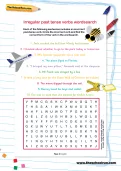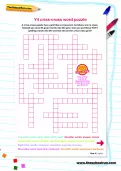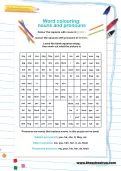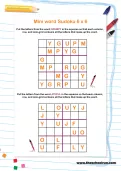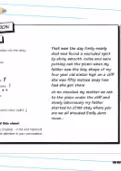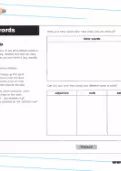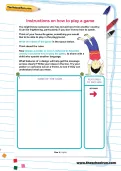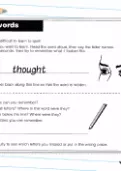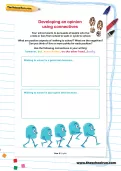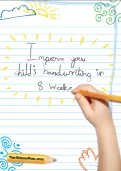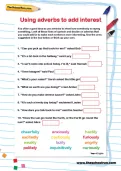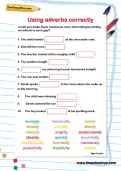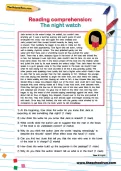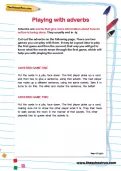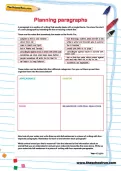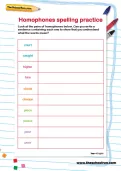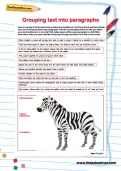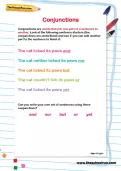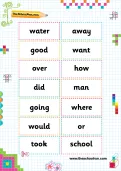A worksheet with a passage of writing that your child needs to read over and mark, inserting the correct punctuation.
or
Register to add to your saved resources
Already a subscriber? to view this content.
A worksheet prompting children to look for words associated with time in a poem. They then need to sort these words into categories.
or
Register to add to your saved resources
Already a subscriber? to view this content.
This worksheet encourages your child to write instructions on how to play a game for a child who does not speak English.
or
Register to add to your saved resources
Already a subscriber? to view this content.
This worksheet gives suggestions on how to memorise the spelling of the word 'thought'. The strategies here could be applied to other tricky words.
or
Register to add to your saved resources
Already a subscriber? to view this content.
This worksheet encourages children to think about the pros and cons of walking to school. It gives a list of connectives and suggests children use these in their writing.
or
Register to add to your saved resources
Already a subscriber? to view this content.
Handwriting is a crucial life skill, but how can you help your child write neatly and legibly? Our eight-week learning pack is packed with information and tips from handwriting experts, as well as fun and practical steps you can take to help your child put theory into practice.
or
Register to add to your saved resources
Already a subscriber? to view this content.
A set of paragraphs with muddled-up sub-headings. Encourage your child to read the paragraphs and then decide which sub-headings go where.
or
Register to add to your saved resources
Already a subscriber? to view this content.
A list of sentences containing speech. Children are encouraged to use the bank of adverbs to improve the sentences.
or
Register to add to your saved resources
Already a subscriber? to view this content.
A list of sentences which could be improved by the use of adverbs. A bank of adverbs is included at the bottom of the sheet to help your child.
or
Register to add to your saved resources
Already a subscriber? to view this content.
A passage of text along with questions designed to prompt your child to retrieve information and infer ideas about characters' feelings. Answers are included.
or
Register to add to your saved resources
Already a subscriber? to view this content.
Cut up these adverbs and then play the two games suggested. This will help your child to understand the meanings of different adverbs and encourage them to use them when speaking and writing.
or
Register to add to your saved resources
Already a subscriber? to view this content.
Notes on the Arctic Fox for your child to cut up and then organise into different subject boxes. They then need to use these notes to write up their own paragraphs, understanding the need for keeping to a single theme for each.
or
Register to add to your saved resources
Already a subscriber? to view this content.
Pairs of homophones and then blank boxes for your child to write their own sentences containing each homophone, demonstrating that they understand the meaning of each.
or
Register to add to your saved resources
Already a subscriber? to view this content.
Various sentences about zebras for children to cut out and then sort into paragraphs. This activity should help your child to understand how each paragraph in a text needs to be about a single theme.
or
Register to add to your saved resources
A similar sentence repeated several times but with a different conjunction each time. Children need to think of ways to end the sentence.
or
Register to add to your saved resources
Already a subscriber? to view this content.
After learning to read and spell the most common words in Reception and KS1, your child will move on to a longer list of common words including 'brought' and 'thought'. Support their learning at home with our KS2 high frequency words practice flashcards.
or
Register to add to your saved resources
